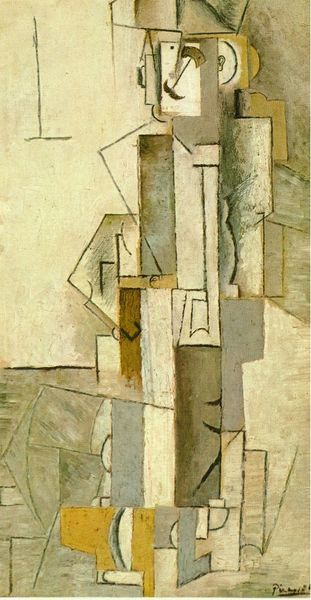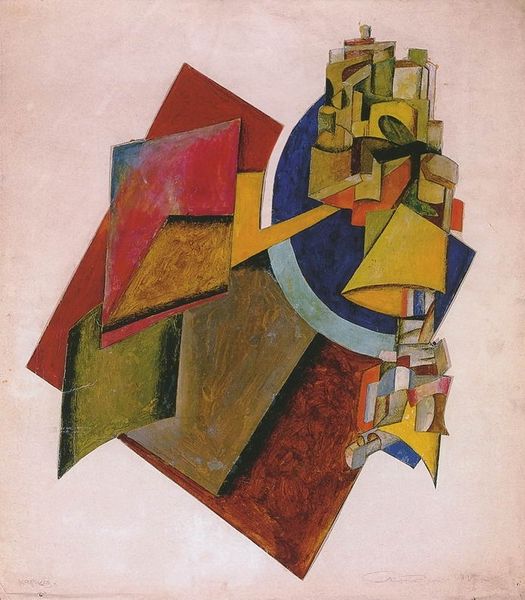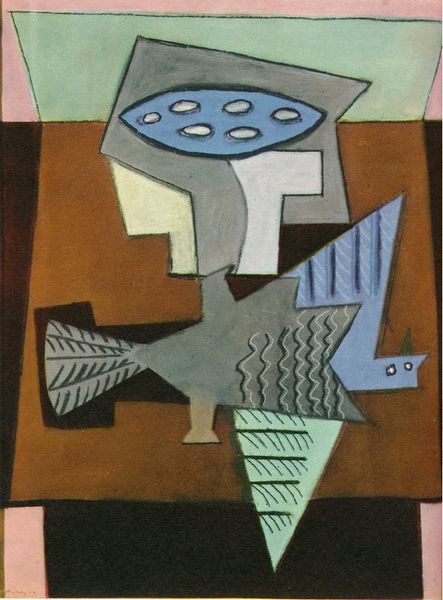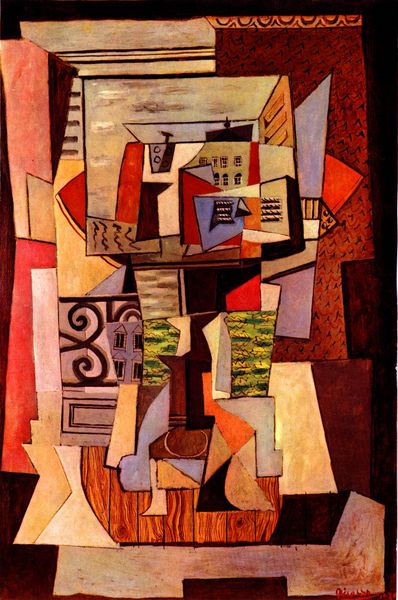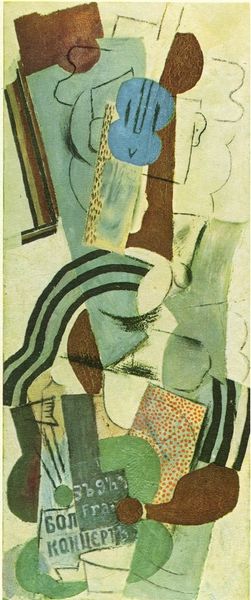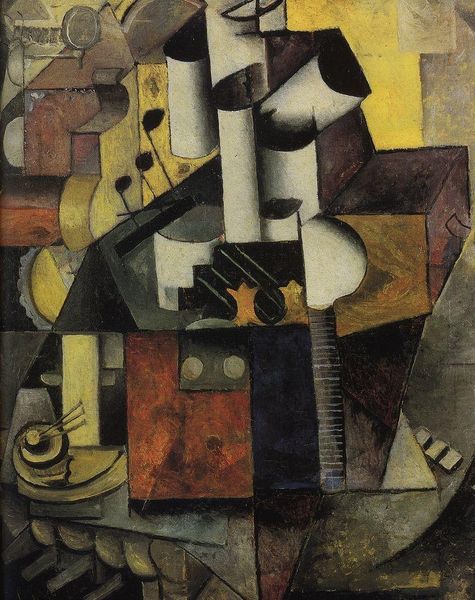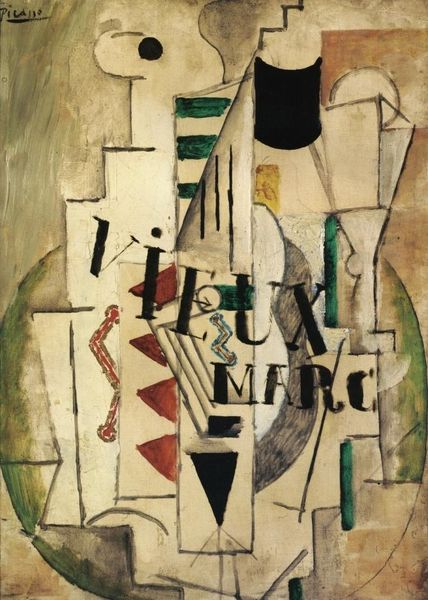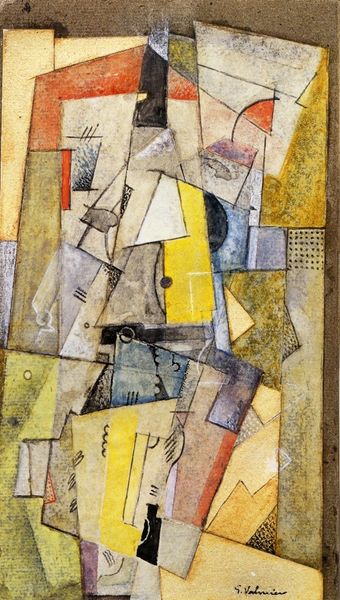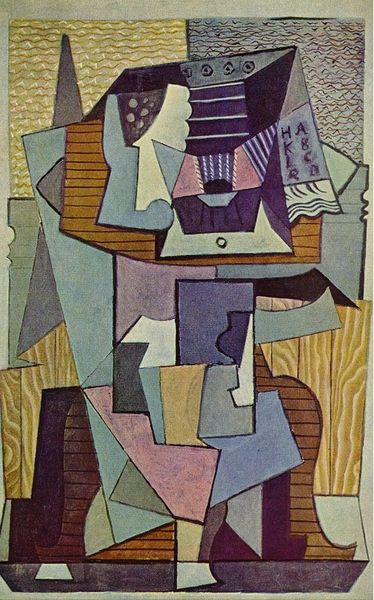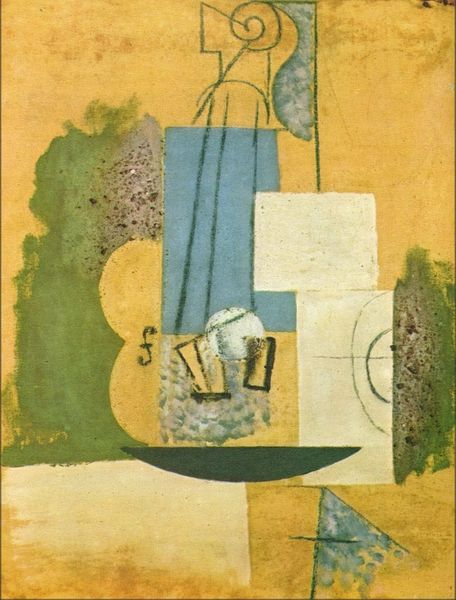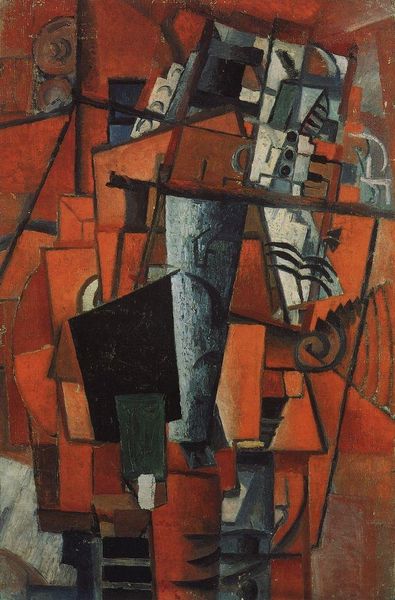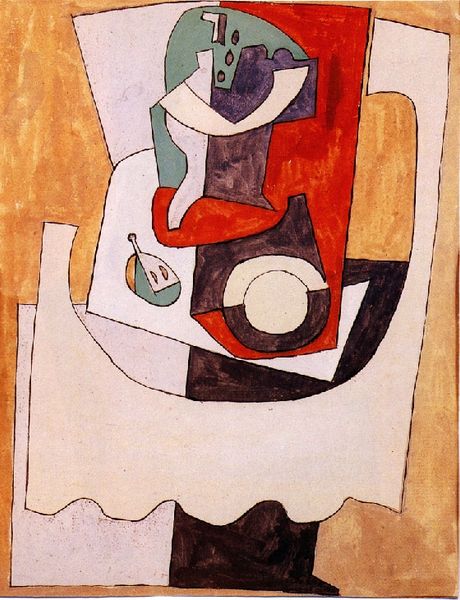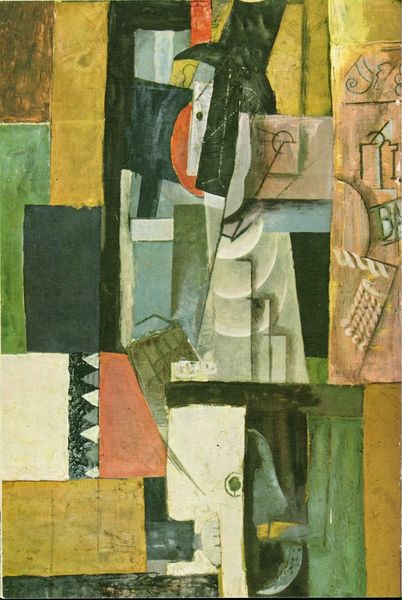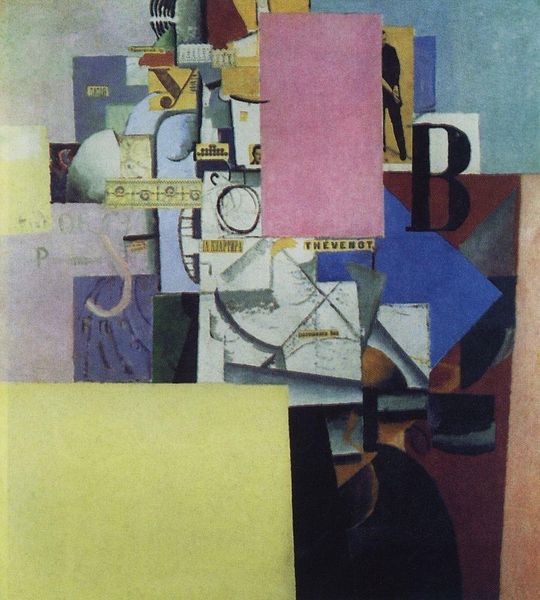
painting, oil-paint
#
cubism
#
painting
#
oil-paint
#
oil painting
#
geometric
#
abstraction
#
mixed media
#
modernism
Dimensions: 14 x 12 cm
Copyright: Public domain US
Editor: So, here we have Picasso's "Couple of Dancers," painted in 1915 using oil paint. It’s such an interesting piece, quite geometric and abstract. What I immediately notice is the way he seems to be deconstructing the human form. What do you see in this work? Curator: Indeed. Viewing "Couple of Dancers" through a historical lens, I see it reflecting the socio-political upheaval of World War I. Cubism, with its fractured perspectives, became a visual language for the fragmentation and chaos experienced during that era. Consider how Picasso, a Spanish artist in Paris, might have felt this instability and translated it into his art. Editor: That’s fascinating. So, the abstraction isn’t just about artistic style; it’s a commentary on the world around him? Curator: Precisely! And the title itself – "Couple of Dancers" – juxtaposed with the abstract forms, creates tension. Are these figures truly dancing, or are they disjointed and struggling? Consider, also, the role of the art market at the time. What kind of collectors were drawn to such radical work, and how did the commercial aspect affect its creation and dissemination? Editor: That makes me wonder about the power dynamics within the art world. How galleries and critics interpreted these works for the public? Did their interpretation affect the socio-cultural message conveyed through it? Curator: Absolutely! Art doesn’t exist in a vacuum. How the artwork is presented influences its reception, how it's viewed, and what the society reads of the time's sociopolitical aspects as recorded by the artists. Editor: This is great! Now I will keep an eye out for those subtle influences when exploring a painting. Thanks so much for shedding light on the historical influences behind it! Curator: It's my pleasure! Hopefully, you'll now consider how institutional structures shape what art is created, exhibited, and ultimately understood.
Comments
No comments
Be the first to comment and join the conversation on the ultimate creative platform.
